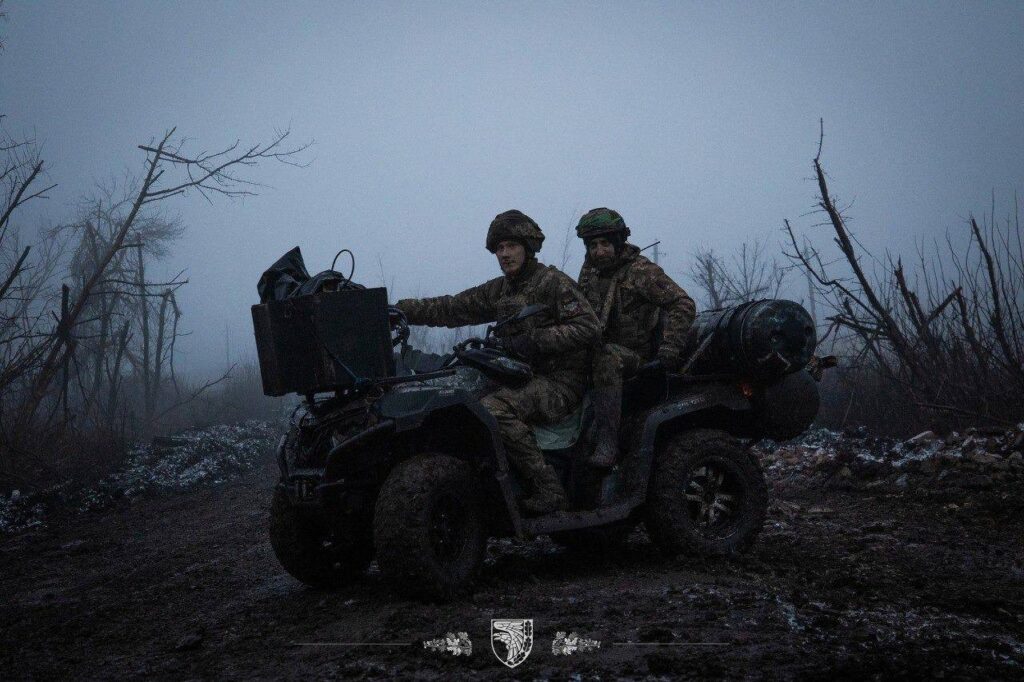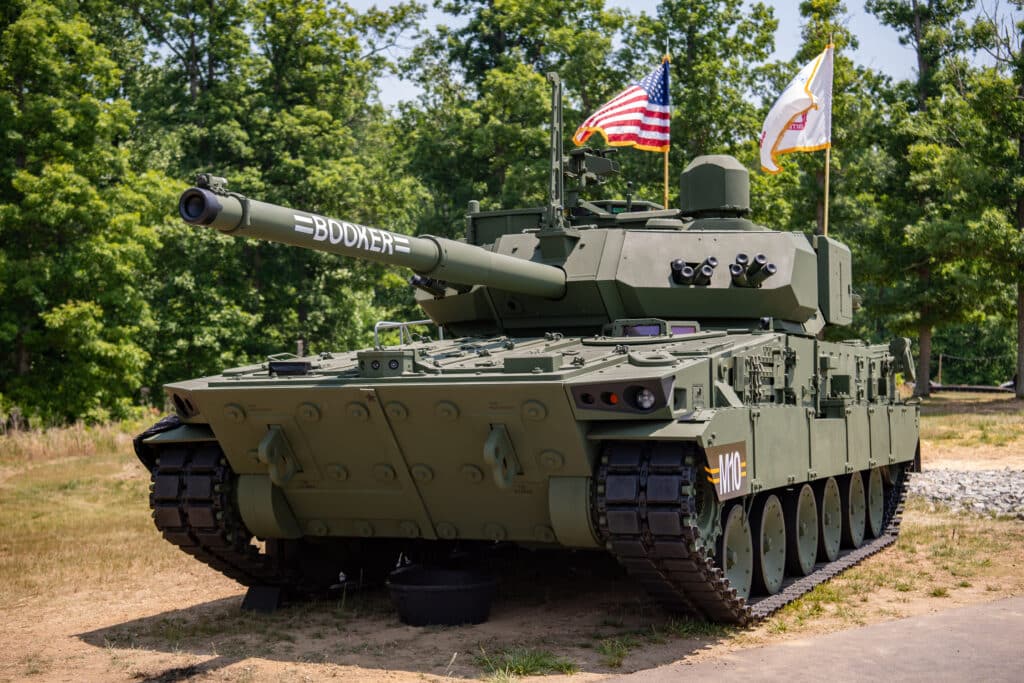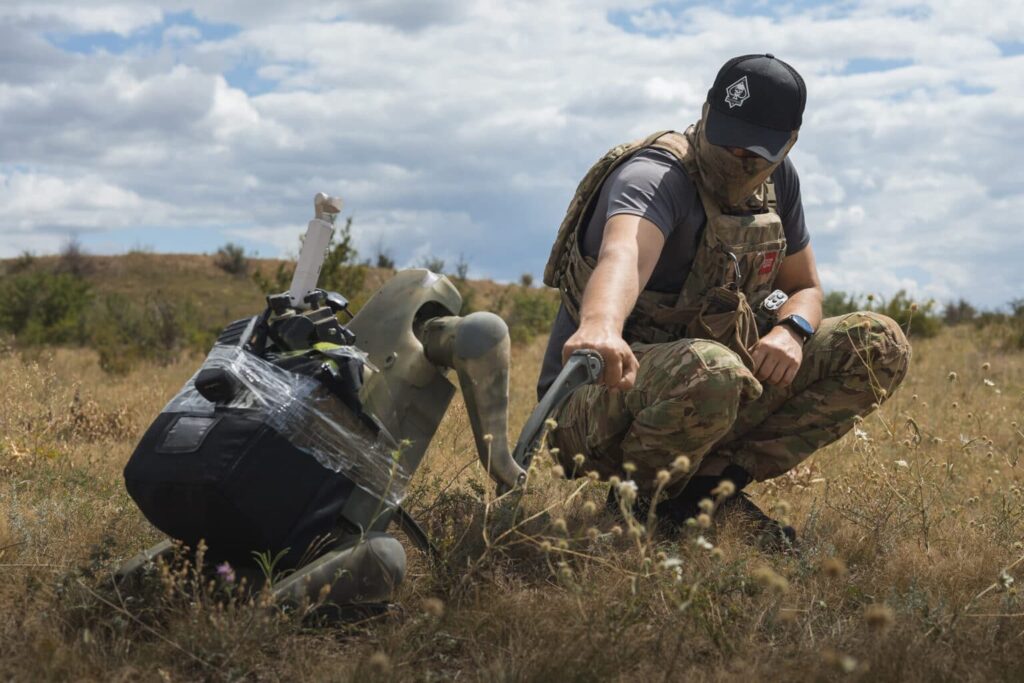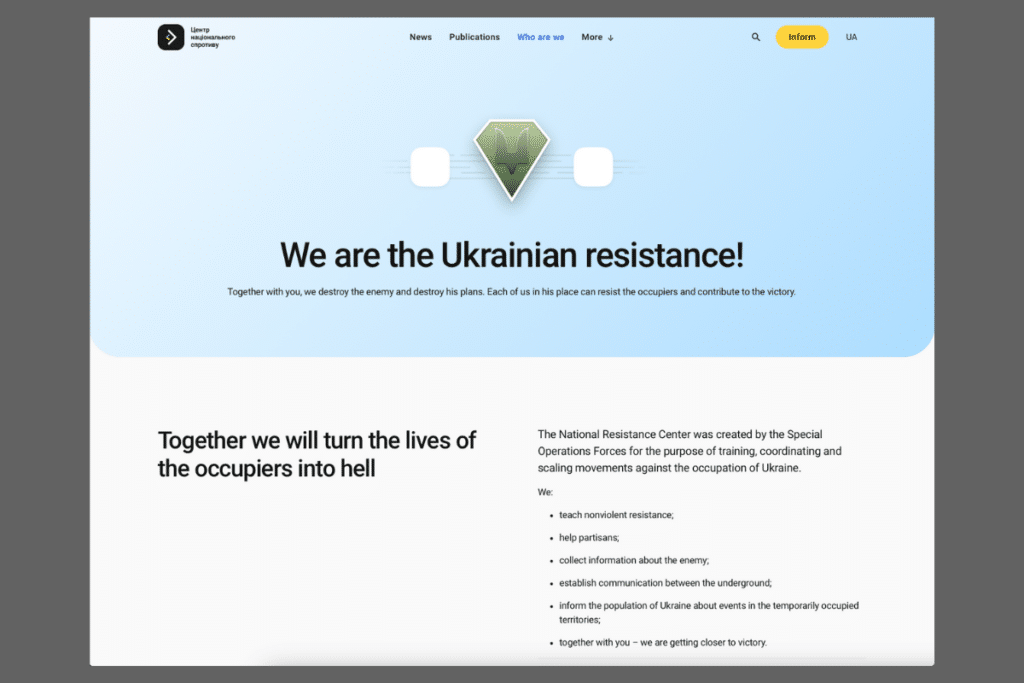This essay is the second installment of a three part series. Subscribe to the SOFX Report for future series. You can find Part I and Part III here.
PART II
Movement & Maneuver

The days of division, brigade, and battalion movements are not over, but will be less and less in an environment where any large-scale troop movements are an easy target with very accurate fires as well as constant drone surveillance, and the addition of terrain and obstacles that constrict large scale movement. Any future conflicts in Asia, especially on islands such as Taiwan, will not be conducive to large-scale maneuver. The topography of Taiwan is mountainous and channelizing. Most of the interior avenues of approach are mountainous roads; not open expanses for large scale tank formations. Also, future conflicts will inevitably take place in large megacities; they are unavoidable as centers of gravity. Large scale movements are not possible there.
As mentioned in Part I, modular, smaller units will be the norm. A platoon plus-sized element must be able to operate and maneuver much more independently even though their mission will be part of their company’s/battalion’s mission. I already recommended changes to the chain of command, adding deputy commanding officers at the brigade and battalion and elevating the rank and experience of platoon commanders. Platoon level noncommissioned officer (NCO) courses should focus on NCOs maneuvering their platoons, sections, and squads independently of direct higher chain of command input.
The U.S. military should develop doctrine and tactics, techniques, and procedures for smaller maneuver elements and include combined arms operations at these lower levels. An example are infantry platoons operating with two tanks attached or other elements of combat power such as engineering assets. In current doctrine, outside assets that are not organic to a unit are usually controlled at the battalion or company level, not below. As a result, platoon commanders have not been trained or required to synchronize all of these outside elements. It needs to become the norm. Brigades and below should be seen as Legos bricks that are basic cohesive units down to the fire team level, but also can easily plug into other units and elements without losing the cohesiveness of standard units.

The U.S. Army should consider revamping its Modified Table of Organization & Equipment (MTOEs) and Tables of Distribution & Allowances (TDAs) based on a more flexible doctrine and formations to support it.1Christopher Carver, “Army transformation and the role of tables of distribution and allowances,” U.S. Army, March 3, 2015, https://www.army.mil/article/143446/army_transformation_and_the_role_of_tables_of_distribution_and_allowances. These are the base documents that prescribe the personnel and equipment each unit should have. MTOEs are traditionally for operational units such as infantry and armor and TDAs are for institutions, schools, and higher echelon support units and commands. New MTOEs should reflect skills needed at the company and platoon level on a modern battlefield to include: fire support, drone operators, intelligence, electronic warfare personnel, cyber and information operations personnel, air defense, and logistics.
The leadership of these new organizational structures should also reflect the increased complexity. Those changes should include higher ranks at the company and platoon level. It is unfair to expect a brand new second lieutenant to have the experience and skills to orchestrate all that is required of them in 21st century warfare. Also combat arms platoons should include a multi-domain squad that can perform a myriad of tasks to include: unmanned systems, counter UAS, electronic warfare, monitoring of social media, and basic offensive/defensive cyber capabilities. The U.S. Army Ranger Regiment has established a multi-domain battalion as part of their military intelligence battalion.2Major Paul A. Lushenko, “The 75th Ranger Regiment Military Intelligence Battalion,” Military Review, Army University Press, July-August 2018, https://www.armyupress.army.mil/Journals/Military-Review/English-Edition-Archives/July-August2018/.
U.S. ground forces at the brigade and below should also reevaluate how they come up with their Mission Essential Task List (METL) and not just stick to the traditional tasks of “company attack” or “battalion defense.” “A METL is a tailored group of mission essential tasks” and the individual tasks are collective tasks “on which an organization trains to be proficient in its design capabilities.”13 Focusing just on these combat tasks causes leaders to have tunnel vision on what is important to the detriment of any other tasks. Other potential tasks that should be considered for a 21st century battlefield are:
- conduct analog operations in an electronic warfare-constrained environment;
- conduct multi-domain operations;
- conduct irregular warfare.
Irregular Warfare is a struggle among state and non-state actors to influence populations and affect legitimacy. Irregular Warfare favors indirect and asymmetric approaches, though it may employ the full range of military and other capabilities, in order to erode an adversary’s power, influence, and will.3Summary of the Irregular Warfare Annex to the National Defense Strategy 2020, U.S. Department of Defense, Irregular-Warfare-Annex-to-the-National-Defense-Strategy-Summary.pdf.
The need for modular, quick moving forces does not always make armored vehicles, such as the Bradley Fighting Vehicle, the vehicle of choice. The U.S. Army and Marine Corps should consider making all light infantry units mobile with a selection of vehicles based on mission. Battalion motor pools should have a selection of HMMWVs, mine resistant ambush protected vehicles, ATVs, and motorcycles/electric bicycles that give commanders a spectrum of options to balance speed, mobility, and protection. The U.S. Army is heading in the right direction with the development of the Infantry Squad Vehicle (ISV) and M10 Booker “light tank.”4Ashley John, “Army takes delivery of first M10 Booker Combat Vehicle,” U.S. Army, April 18, 2024, https://www.army.mil/article/275419/army_takes_delivery_of_first_m10_booker_combat_vehicle.

As part of the ability to work in elements platoon sized or smaller independently, reserve forces will take on even more importance during operations. Companies and platoons in Ukraine are culminating quickly in the labyrinth of trenches and obstacle belts. Units will have to have more than one reserve force on standby to exploit success or stop a breakthrough. Given the increased speed and lethality of modern war, units below the corps level down to the company level should consider having two reserve forces to reinforce success, exploit opportunities, and regain the initiative during stalled breaches and assaults. Smaller units will culminate quicker than larger units and will need that depth. The U.S. Marine Corps’ shift to smaller, more agile units is definitely on the right path despite the resistance to change throughout the force.5FM 7-0 Training, Headquarters, Department of the Army, October 5, 2016, https://armypubs.army.mil/epubs/DR_pubs/DR_a/ARN35076-FM_7-0-000-WEB-1.pdf. The U.S. Army should follow their example.
FPV drone swarm tests in Ukraine.https://t.co/9PvvmcKXEY pic.twitter.com/AJJzqIoazb
— Special Kherson Cat
(@bayraktar_1love) October 30, 2024
Next, the U.S. military has to get out of the special operations forces’ door kicking mentality. As seen in Ukraine, room clearing is not the most important skill during urban operations. The ability to move through a city, defend it, and sustain operations there is much more important. The Russians will use thermobaric artillery rounds to destroy buildings threatened by or occupied by Armed Forces of Ukraine (AFU). They use the rubble as obstacles and avoid messy room-to-room clearing.6Samuel Cranny-Evans, “The inner workings of Russia’s thermobaric weapons,” Army Technology, August 15, 2022, https://www.army-technology.com/features/the-inner-workings-of-russias-thermobaric-weapons/?cf-view. Also most of the U.S. military’s personal equipment is designed for riding in vehicles all day and conducting room clearing; not trench warfare and low crawling to cover under artillery fire. Most soldiers now carry their weapons magazines on the front of their chest. Have you ever tried to low crawl with your magazines on your chest? It does not work and gets your magazines jammed with dirt.
Ukrainian trench warfare in Donetsk Oblast, filmed by soldiers from the Independent Presidential Regiment. pic.twitter.com/G4woy5bHF1
— OSINTtechnical (@Osinttechnical) November 5, 2022
Intelligence
In Ukraine, intelligence within the AFU at the operational and tactical level has been ad hoc at best. The reasons are organizational and cultural. The old Soviet mentality was to be very secretive and did not foster a collaborative environment. In addition, they had to build many units from scratch and have not built an internal intelligence officer corps with the Army, National Guard, and Territorial Defense. Many battalions did not have an intelligence officer and if they did, he was often dual-hatted as the reconnaissance unit leader as well.

Much information and battlefield intelligence are garnered and shared on social media. There are numerous What’s App and Telegram channels to support partisans as well as provide a safe avenue for Russian defectors.7Daniel P. Taylor, “Radical Realignment: The Marine Plan to Reshape Battalions and Squadrons Over the Coming Decade,” Sea Power, May 26, 2020,https://seapowermagazine.org/radical-realignment-the-marine-plan-to-reshape-battalions-and-squadrons-over-the-coming-decade/ Partisan forces play a large role in this conflict and do not get the credit that they deserve for both their sabotage and intelligence gathering efforts. The Ukrainians have used irregular forces to asymmetrically defeat Russia’s numerical superiority.
Western militaries do not necessarily have the same cultural or organizational issues, but they do have a rigidity in thinking and sometimes an over reliance and trust in their own intelligence and information gathering methods. Social media should be an integral part of the intelligence preparation of the battlefield process. U.S. Army units down to the company level should be monitoring local social media. Too often social media monitoring is seen as a strategic or operational task and the information flow down to the platoon level is way too slow. Much of social media is real time or close to real time so it must be acted on quickly. Just think how often people interact with social media in their private lives and how quickly you can “lose the thread.” Western militaries should consider having cells to monitor social media full time at the tactical level.
Good morning to all free Russians!
Gorkovsky, Belgorod Oblast, spring 2024, color photo. pic.twitter.com/af8NHs2RtS
— “Liberty of Russia” Legion (@legion_svoboda) March 21, 2024
I cannot stress enough the importance of using the internet and social media to your advantage. The Ukrainians have developed a National Resistance Center website that covers everything to include sabotage, how to report collaborators, how to provide tips on Russian troop locations, and instructions for Russian defectors.8Samuel Cranny-Evans, “The inner workings of Russia’s thermobaric weapons,” Army Technology, August 15, 2022, https://www.army-technology.com/features/the-inner-workings-of-russias-thermobaric-weapons/?cf-view. It even has manuals on how to resist. The U.S. must do a better job of embracing irregular forces in conflicts when they are the outsiders; especially in a conflict spread over a huge geographical area such as the Pacific where the U.S. footprint will be light and facing the tyranny of distance. Partisans, shadow governments, and displaced local authorities are excellent sources of information and intelligence. Most of the Russian occupied municipalities in Ukraine have Ukrainian shadow authorities who maintain close ties to the community. The war in Ukraine also shows that human reconnaissance is still important.

The U.S. Army structure of the future proposes moving the majority of cavalry assets out of the brigade and maintaining them at the corps and division-level with a cavalry troop at the brigade level and scout platoons at the battalion.9 Vera Bergengruen,“How Telegram Became the Digital Battlefield in the Russia-Ukraine,” Time, March 21, 2022, Warhttps://time.com/6158437/telegram-russia-ukraine-information-war/ Based on operations in Ukraine and the terrain in any Pacific conflict requiring dispersal, the more cavalry assets the better. In an EW contested environment, the importance of “eyes on” the enemy will become even more critical when technical reconnaissance assets are negated. Furthermore, the U.S. Army should consider reconstituting corps long range surveillance units (LRSU) to operate beyond the forward line of troops to look for gaps and non-contiguous enemy defensive positions (the front line of troops in Ukraine is non-contiguous, i.e. not one continual trench line).10National Resistance Center of Ukraine, accessed on August 17, 2024, https://sprotyv.mod.gov.ua/en/ The U.S. Army inactivated LRSU partly due to the speed of maneuver forces in Operation Enduring Freedom which overran LRSU before they were able to provide intelligence.
This article was authored by Erik Kramer, Senior Fellow with the National Center for Urban Operations and co-founder of the Ukraine Defense Support Group. Kramer has over 33 years of military and government service, including his time as a Special Forces officer, and has been in Ukraine since 2022 advising the Armed Forces of Ukraine. He just published his first book, “American Dystopia-a cautionary tale.” Through a series of fictious interviews with a cross section of Americans, the book shows what the U.S. would look like two years after a collapse and how its demise would affect every aspect of life to include culture, the economy, education, international relations, and politics. Edited by Noah Schmidt, Editor at SOFX.
Endnotes
- Christopher Carver, “Army transformation and the role of tables of distribution and allowances,” U.S. Army, March 3, 2015, https://www.army.mil/article/143446/army_transformation_and_the_role_of_tables_of_distribution_and_allowances.
- Major Paul A. Lushenko, “The 75th Ranger Regiment Military Intelligence Battalion,” Military Review, Army University Press, July-August 2018, https://www.armyupress.army.mil/Journals/Military-Review/English-Edition-Archives/July-August2018/.
- Summary of the Irregular Warfare Annex to the National Defense Strategy 2020, U.S. Department of Defense, Irregular-Warfare-Annex-to-the-National-Defense-Strategy-Summary.pdf.
- Ashley John, “Army takes delivery of first M10 Booker Combat Vehicle,” U.S. Army, April 18, 2024, https://www.army.mil/article/275419/army_takes_delivery_of_first_m10_booker_combat_vehicle.
- FM 7-0 Training, Headquarters, Department of the Army, October 5, 2016, https://armypubs.army.mil/epubs/DR_pubs/DR_a/ARN35076-FM_7-0-000-WEB-1.pdf.
- Samuel Cranny-Evans, “The inner workings of Russia’s thermobaric weapons,” Army Technology, August 15, 2022, https://www.army-technology.com/features/the-inner-workings-of-russias-thermobaric-weapons/?cf-view.
- Daniel P. Taylor, “Radical Realignment: The Marine Plan to Reshape Battalions and Squadrons Over the Coming Decade,” Sea Power, May 26, 2020,https://seapowermagazine.org/radical-realignment-the-marine-plan-to-reshape-battalions-and-squadrons-over-the-coming-decade/.
- Samuel Cranny-Evans, “The inner workings of Russia’s thermobaric weapons,” Army Technology, August 15, 2022, https://www.army-technology.com/features/the-inner-workings-of-russias-thermobaric-weapons/?cf-view.
- Vera Bergengruen,“How Telegram Became the Digital Battlefield in the Russia-Ukraine,” Time, March 21, 2022, Warhttps://time.com/6158437/telegram-russia-ukraine-information-war/.
- National Resistance Center of Ukraine, accessed on August 17, 2024, https://sprotyv.mod.gov.ua/en/.











Pleasure to work with Erik on this